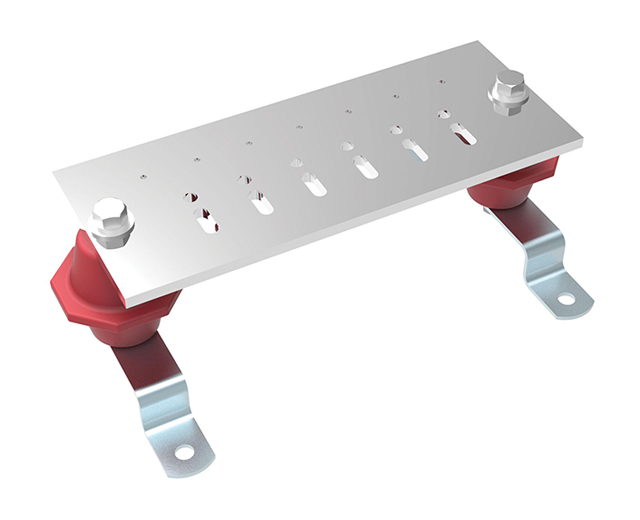2025-07-25 09:46:04
In the era of electrification and sustainability, efficient power transmission inside battery systems is more important than ever. A new generation of copper foil Flexible Busbar has emerged as a game-changing solution in the new energy power battery market, offering enhanced flexibility, lower internal resistance, and high current-carrying capability for electric vehicles (EVs), hybrid systems, and large-scale energy storage applications.
This technical evolution responds to growing demands in the market for high-efficiency power battery connectors, especially in new energy battery pack structures where compact design and thermal stability are key.

A copper foil flexible busbar is a laminated stack of ultra-thin copper foil busbar layers that are bonded together—most often using ultrasonic welding copper foil technology. Unlike rigid busbars, this flexible structure allows the conductor to bend, twist, and adapt to the complex three-dimensional internal layouts of modern EV battery systems.
Instead of single solid bars, these laminated flexible solutions:
Improve vibration resistance
Absorb thermal expansion
Minimize mechanical stress on terminal connections
Enhance energy transfer efficiency between cells/modules
In EV battery copper connector systems, engineers face increasing pressure to improve electrical and mechanical performance while reducing space and weight. Traditional rigid busbars are difficult to route and can stress connection points due to thermal cycling or shock.
Flexible busbars made of laminated copper foil:
Handle higher current with lower resistance
Offer superior space efficiency inside battery packs
Reduce heat generation during high discharge events
Simplify installation in complex battery pack geometries
These busbars are now widely used in applications such as:
EV powertrain battery packs
High-voltage hybrid battery systems
Commercial energy storage systems (ESS)
Photovoltaic inverters and battery interfaces
The technical innovation in copper foil busbars is closely tied to equipment advancements. Modern production lines now feature highly automated copper bending busbar machines, which allow manufacturers to shape busbars with precise angles and curves, essential for high-density battery modules.
At the same time, ultrasonic welding machine for Copper Busbar integration ensures the clean, flux-free joining of laminated foils with consistent mechanical bonding and minimal electrical resistance. Ultrasonic welding is especially preferred because it:
Eliminates the need for soldering or adhesives
Prevents oxidation and contamination
Delivers reliable electrical and mechanical joints
The adoption of copper foil flexible busbar new energy power battery systems in EVs is driven by their unmatched ability to combine electrical performance with mechanical flexibility. Whether serving as an EV battery copper connector between modules or a power battery connector to interface BMS units, these laminated copper structures improve efficiency and reliability.
Some key application examples:
Cell-to-cell interconnections in pouch or prismatic lithium batteries
Series/parallel links across battery modules
Main current collectors for high-voltage distribution
Connection bridges in battery packs requiring high flexibility and vibration endurance
The application of laminated copper busbar systems is not limited to electric vehicles—it also extends to wind power, solar power storage units, marine batteries, and smart grid systems.
| Search Intent | How This Article Meets It |
|---|---|
| What is a Flexible Copper Busbar? | Defines copper foil flexible busbar and its structure |
| Why use copper foil busbars in EV batteries? | Lists electrical, mechanical, and installation benefits |
| How are Copper Busbars manufactured? | Explains copper bending and ultrasonic welding processes |
| Where to use laminated copper busbars? | Details real-world applications in EVs and ESS |
| How does ultrasonic welding work for copper foil? | Describes process advantages and equipment use |
| Can flexible busbars improve battery efficiency? | Provides detailed performance insights |
As the new energy sector evolves toward 800V high-voltage battery architectures, the demand for lightweight, space-efficient, and high-performance interconnect solutions will intensify. Copper foil flexible busbar systems—enabled by ultrasonic welding copper foil bonding and copper bending busbar machines—will remain essential in optimizing layout, improving energy transfer, and ensuring thermal stability.
With major automotive OEMs and battery manufacturers investing in flexible laminated copper technologies, the power battery connector market is expected to grow at a CAGR of over 12% in the next five years. For suppliers, now is the time to invest in automated machinery and R&D for new material combinations, encapsulation techniques, and high-frequency current compatibility.